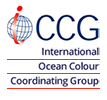Objectives of the IOCCG
- To foster expertise in using ocean-colour data (training)
Broaden the user community for ocean color data, particularly in developing countries, through training courses, workshops and international symposia as well as exchange of in situ data and software tools for data access and processing. - To provide a common voice for the user community
Develop a consensus among users on key issues related to satellite-ocean-colour science and technology, and communicate the collective view to the appropriate international bodies and space agencies. Evaluate proposals from CEOS members for new sponsors, data products and applications related to ocean-colour measurements - To advocate the importance of ocean-colour data to the global community
Promote the importance of ocean colour data to the global community through workshops, conferences and other appropriate information systems such as a home page and data access networks. - Optimize quality of data for calibration and validation
Encourage the formation of an international calibration and validation network for ocean colour and ensure that sea-truth measurements conform to accepted international protocols. Facilitate the formation of a distributed calibration and validation archive and database network. - Advocate the collection of essential ocean and atmosphere data
Identify key variables relevant to the application of ocean-colour data and promote data-collecting strategies to fill existing gaps in time and space. - Facilitate merging and access to ocean-colour data
Encourage agencies to agree on common data products and algorithms and conform to common formats for accessing and exchanging data. Encourage provision of in situ data by relevant agencies and recommend that both satellite and in situ data are available and accessible in common data-exchange formats from the same source.
Terms of Reference
The IOCCG adopted the following Terms of Reference, which were finalised at the second meeting of the group in Tokyo, Japan, 17-18 March, 1997. The Terms of Reference were updated to explicitly include the societal applications of ocean colour data and the inclusion of all water types at the 40th meeting of the IOCCG Executive Committee, held online on 6 & 19 March 2025.
- To serve as a communication and coordination channel between data providers and the global user community of satellite ocean colour data, and so to maximize the benefits from international investments in ocean colour science and technology.
- To construct a partnership, at the international level, between the space agencies, scientific experts, and users of satellite and in situ ocean colour data to promote development of rigorous scientific theory and applications and to coordinate data utilization.
- To work closely with the appropriate international bodies (including CEOS, IOC and SCOR), international scientific programs (such as IGBP and GOOS), satellite ocean colour mission offices and other agencies (such as environmental and fishing agencies) to harmonize the international effort and advance ocean colour science and its applications.
- To develop a collective voice for the community of users of ocean colour data and to articulate this voice to the appropriate international bodies, international scientific programs and space agencies.
- To promote the long-term continuity of satellite ocean colour datasets; the development of added-value products and operational services that exploit ocean colour data; the development of new generations of ocean colour sensors; and the integration of data from complementary Earth observation sensors.
- To encourage the application of ocean colour science and technology to investigations of freshwater bodies (rivers, lakes) and transitional waters (estuaries, wetlands) between oceans, coasts, and inland water bodies.
- To facilitate the use of ocean colour data for the benefit of the society at large, to address pressing issues of the day, including, but not limited to, addressing climate-change-related threats, water quality, and contributing to stewardship of aquatic ecosystem functions and services.


 The sixth International Ocean Colour Science (IOCS) meeting will take place in Darmstadt, Germany from 1 – 4 December 2025, hosted by EUMETSAT and ESA with support from other agencies.
The sixth International Ocean Colour Science (IOCS) meeting will take place in Darmstadt, Germany from 1 – 4 December 2025, hosted by EUMETSAT and ESA with support from other agencies.